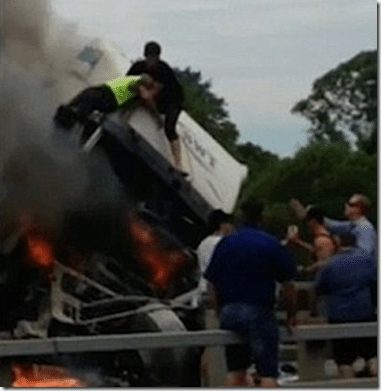Failure Must be an Option
 The Australian Government wants to stimulate an innovation/ideas avalanche and have thrown $1.1 billion at trying to create a ‘boom’ of ‘agile’, ‘creative’ and ‘innovative’ people seeking to embrace risk (http://www.smh.com.au/federal-politics/political-news/innovation-statement-what-you-need-to-know-about-malcolm-turnbulls-plan-20151206-glgzhs.html ). Just like the US Government in Oct 2015 in The Strategy for American Innovation advocated Americans to ‘embrace risk’ and encourages ‘risk-taking’.
The Australian Government wants to stimulate an innovation/ideas avalanche and have thrown $1.1 billion at trying to create a ‘boom’ of ‘agile’, ‘creative’ and ‘innovative’ people seeking to embrace risk (http://www.smh.com.au/federal-politics/political-news/innovation-statement-what-you-need-to-know-about-malcolm-turnbulls-plan-20151206-glgzhs.html ). Just like the US Government in Oct 2015 in The Strategy for American Innovation advocated Americans to ‘embrace risk’ and encourages ‘risk-taking’.
One of the key changes that is part of New National Innovation Agenda is changes in penalties for bankruptcy because, ‘current insolvency laws put too much focus on penalising and stigmatizing failures’ (http://www.businessinsider.com.au/here-comes-the-governments-innovation-statement-2015-12). Incoming Chief Scientist at CSIRO: ‘decried the ‘fear of failure’ that lies deep in the Australian mindset’. Nothing kills innovation and creativity like risk aversion.
Yet, many of the things we do in other organisations stifle a ‘mentalitie’ (collective unconscious) of innovation. For example, in 2011 the bureaucracy in Work Health and Safety law doubled. In 2010 the development of NAPLAN set back innovation in school education 50 years (http://www.smh.com.au/federal-politics/political-opinion/naplan-is-driving-our-students-backwards-20130514-2jk5p.html; http://www.theaustralian.com.au/news/inquirer/busting-the-naplan-myths/story-e6frg6z6-1226913710635).
So, in business and science (and the recent Australia Day awards) we want to encourage mavericks, mavens and misfits (eg. Dick Smith, Richard Branson and Australia’s Greatest People http://www.booktopia.com.au/australia-s-greatest-people-and-their-achievements-linsay-knight/prod9780857980205.html ) but safety and education mavens must be marginalized and punished. In Art and Music adventurers in risk are applauded and in risk and safety and schooling, one size fits all. Then when Safety comes out with an ‘innovation’ it is something like a ‘drops calculator’ that normalises ‘pissy petty’ safety (http://www.dropsonline.org/resources-and-guidance/drops-calculator/) and the focus on objects. Safety, by endorsing the focus on objects not subjects (people) continues to focus on mechanization not the humanization of Safety. No wonder Safety doesn’t really innovate, no wonder it avoids the risk of critical thinking.
What a dilemma, unless is our society schizophrenic?
Enshrined in the New National Innovation Agenda is the belief that failure must be an option and that punishment for risk taking must be minimized. Yet in risk and safety we have the opposite, all risk must be denounced and declared as evil, evil doers must be punished.
In my book Real Risk, Human Discerning and Risk pp. 55-61 (http://www.humandymensions.com/books) I show how our society rewards risk that fails but applauds risk that is successful (eg. Jessica Watson).
This week we saw amazing footage of a man who helped rescue a trapped driver from a burning truck. We watched as this semi-conscious 72 year old was assisted out of the cabin and then the truck was engulfed in flames (see attached photo). This news flashed around the world and the young man Athen Barneby was lauded for his courage, risk taking and selflessness (http://www.dailymail.co.uk/news/article-3428289/Man-climbs-burning-truck-pull-elderly-driver-free.html). What if he had failed? The story would have been ‘Idiot Tries to Rescue Driver from Burning Truck’ story. Safety would of course chime in with all the hindsight solutions.
This is how Safety tends to thinks, always wise after the event and never present in the moment. Linkedin is flooded by safety people posting silly photos of ‘other people doing things that ‘look’ risky being decried by ‘other’ safety people (who in the superiority of hindsight) declare ‘bloody idiot’. A risk aversion mentalitie (collective unconscious) creates this kind of culture. Challenge any accepted Safety ideology of Linkedin and the tirade of insults is extraordinary. This is the hotbed of Safety, consumed with petty things and blind to the by-products and trade offs of its own ideologies, missing the big picture.
Of course, the fear of risk is also the fear of failure. A culture of fear embeds fear invisibly into a culture (through the backdoor of safety) so that it spreads between disciplines, politics and learning. The learning occurs by osmosis, nothing is overtly declared instead, we all know the consequences of not reaching zero. When the talk is about zero and the ideology is about zero then there can be no failure without punishment. Therefore the focus in Safety is on counting not engaging people in tackling risk. Just watch Safety get excited about counting apps, checklist apps and calculator apps and you will witness a demonstration that Safety is a mathematical exercise not a human exercise.
Instead, where should the focus be? The focus should be on resilience and skill development in the face of failure but the fear of failure itself. What can Safety do that is positive?
- The first place to start is in the language and words used that associate risk aversion with safety.
- The second is to move from a discourse of fear and punishment to a discourse of learning and understanding.
- The third is to shift from a focus on systems to a focus on people, ‘human factors’ should not be about humans as a factor within a system.
- Finally, Safety needs to shift from the mechanics of counting and the ideology of zero to the skills of engagement, observing and listening.
It’s not rocket science, yet in the face of what safety now does, it is strangely innovative. Maybe with these new values and attitudes in an organisation’s culture we might get some drift into agility, innovation and creativity that the Government is seeking.



Do you have any thoughts? Please share them below